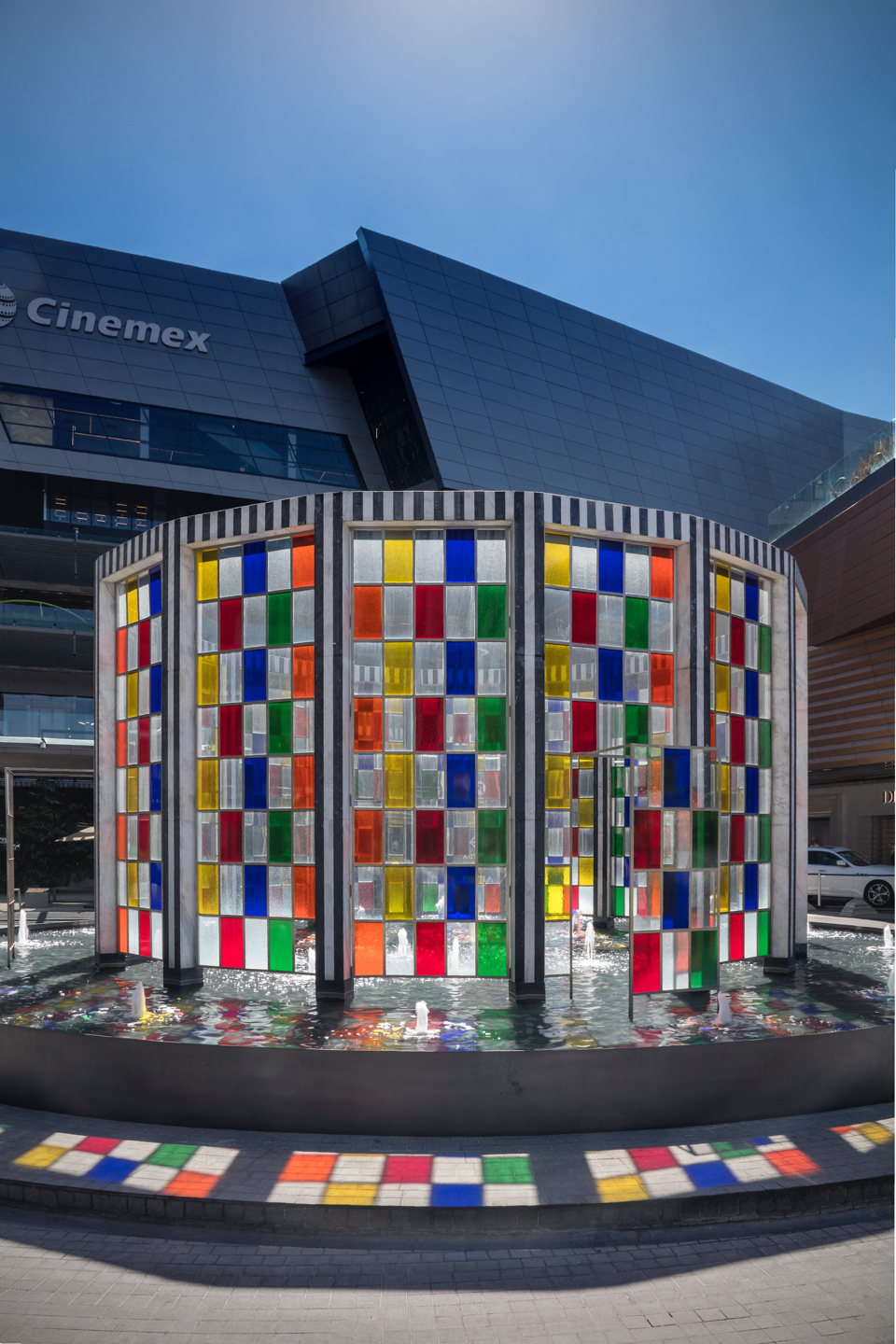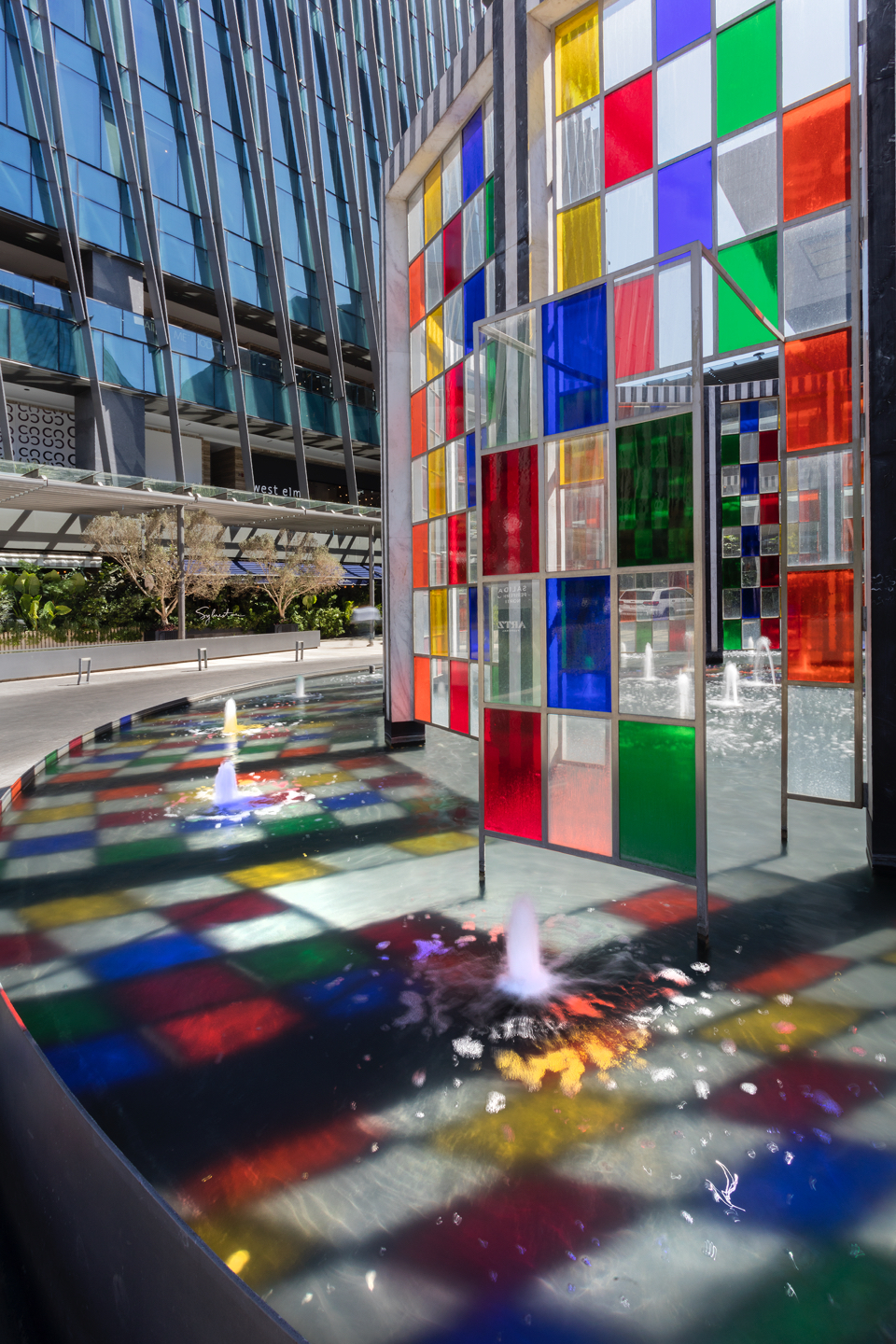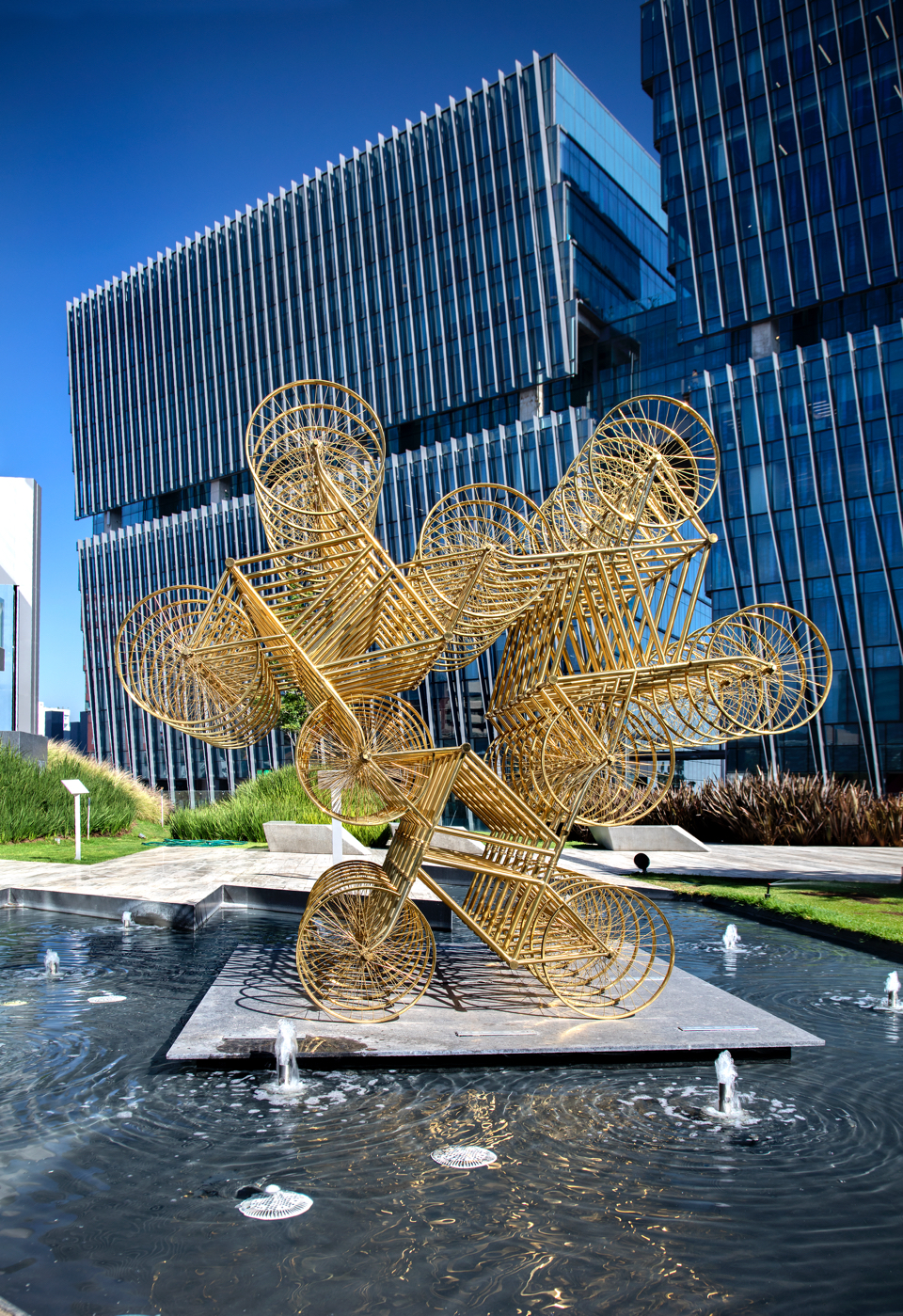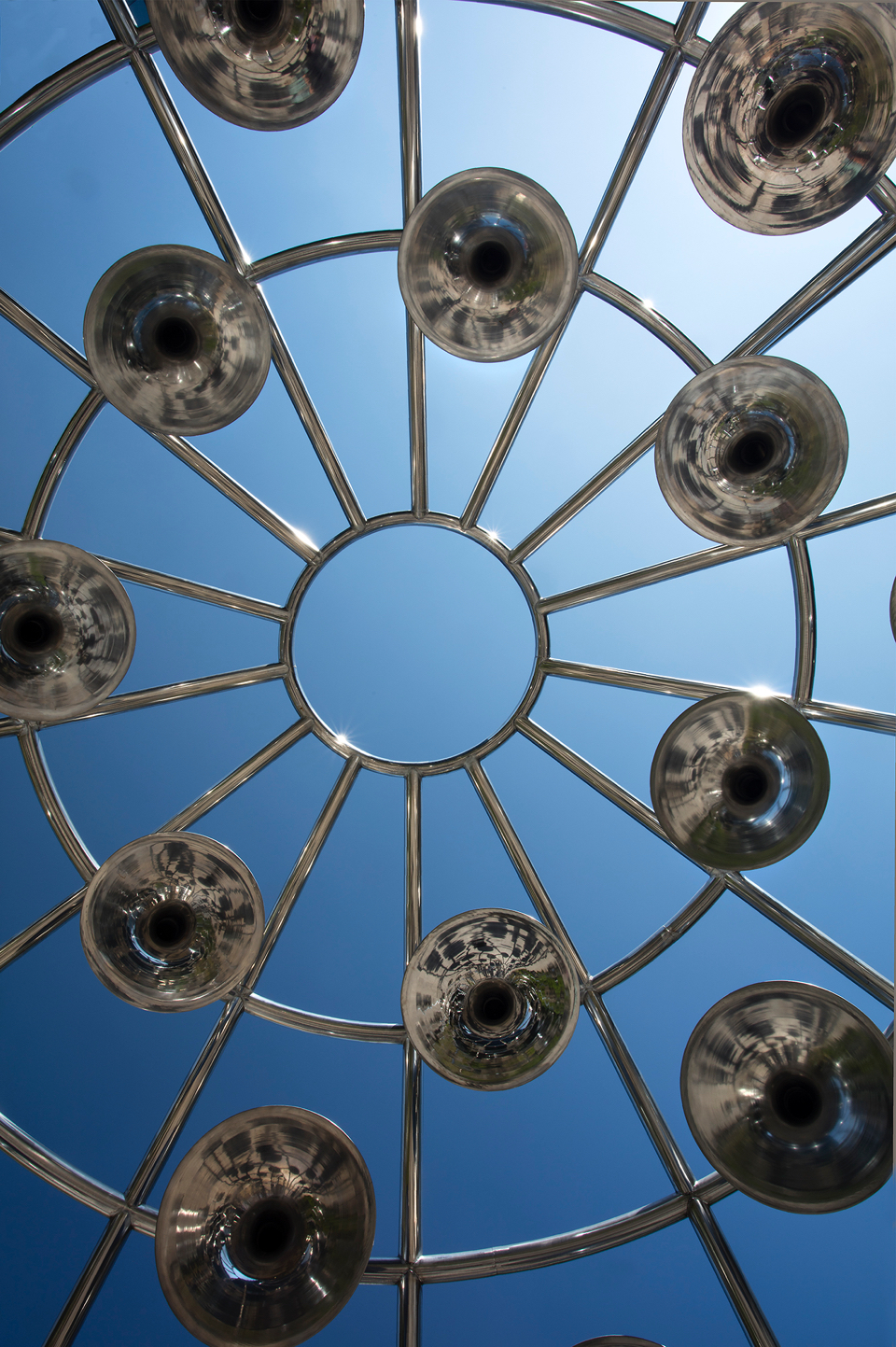26 Sep DANIEL BUREN
DANIEL BUREN (France, 1938)
DE LA ROTONDA DE LA FUENTE. CINCO COLORES PARA MÉXICO, 2018
In situ work, memorial to architect Manuel Tolsá
Marble, aluminum and colored glass
Daniel Buren’s work revolves around the abstraction of the form through lines and color; his artistic proposal is framed within the fields of architecture and urbanism. With his in situ work, he highlights certain aspects of the buildings and spaces he intervenes, and as a result he also has an impact on the landscape. Ultimately, his compositions address the relationship between human beings and their physical surroundings.
The artwork exhibited here was thought up and created to fit the central fountain of the ARTZ Pedregal complex. In doing so, the artist opened a dialogue with the space and its surroundings, by combining simple materials, geometric figures and solid colors that coexist with the water and the natural light.




















